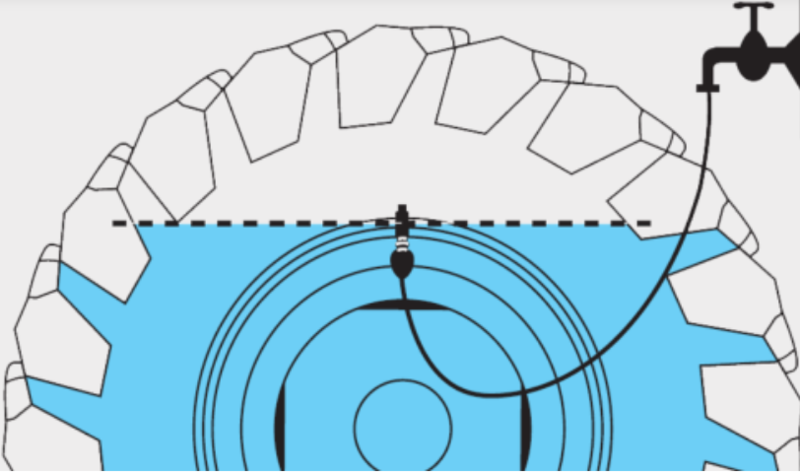Improving Tractor Traction with Water-Filled Tires

How filling your tractor tires with water can boost traction, enhance productivity, and optimize your farming operations.
The Science Behind Water-Filled Tires
Water-filled tires work on the principle of ballast. Ballast is additional weight added to the tractor to improve its stability and traction on the field. Water, being a dense and readily available substance, is an excellent choice for this purpose.
When water is added to tractor tires, it increases the overall weight of the tractor. This additional weight pushes the tires deeper into the ground, increasing the surface area in contact with the soil. As a result, the tractor gains better grip and traction, which is crucial for efficient farming operations.
Benefits of Enhanced Traction for Farming Operations
The primary benefit of enhanced traction from water-filled tires is improved efficiency in fieldwork. Better traction means the tractor can pull heavier implements and navigate through challenging terrains without slipping.
Enhanced traction also reduces fuel consumption. When the tires grip the ground firmly, there is less wheel slippage, which means the tractor works more efficiently and uses less fuel. Additionally, better traction reduces soil compaction, promoting healthier soil and better crop yields.
How to Properly Fill Tractor Tires with Water
Filling tractor tires with water is a straightforward process but requires some precautions. First, make sure the tires are rated for water filling and check the manufacturer's recommendations for the maximum fill level.
To fill the tires, you will need a water source, a hose, and a valve stem adapter. Position the tire with the valve stem at the top, attach the hose to the valve stem, and slowly fill the tire with water. Stop when the water level reaches about 75-80% of the tire's volume to allow for air expansion. Finally, recheck the tire pressure and adjust if necessary.
Comparing Water-Filled Tires to Other Ballasting Methods
Water-filled tires are just one of several ballasting methods available. Other common methods include using cast iron weights, calcium chloride solutions, or beet juice. Each method has its advantages and disadvantages.
Water is inexpensive and readily available but can freeze in cold climates. Calcium chloride solutions prevent freezing but can be corrosive to rims and require careful handling. Cast iron weights are durable but add significant upfront costs and reduce flexibility in adjusting the ballast. Beet juice is non-corrosive and freeze-resistant but is more expensive than water and can be difficult to source.
Maintenance Tips for Water-Filled Tractor Tires
Regular maintenance of water-filled tires is essential to ensure their longevity and optimal performance. Check the tire pressure frequently, as temperature fluctuations can cause pressure changes. Adjust the air pressure as needed to maintain the correct balance.
Inspect the tires for any signs of leaks or damage. If you notice any issues, address them promptly to prevent further complications. Additionally, consider using a rust inhibitor if you are concerned about corrosion on the rims. Proper storage of the tractor in a sheltered area can also help protect the tires from extreme weather conditions.

 Loading..
Loading..